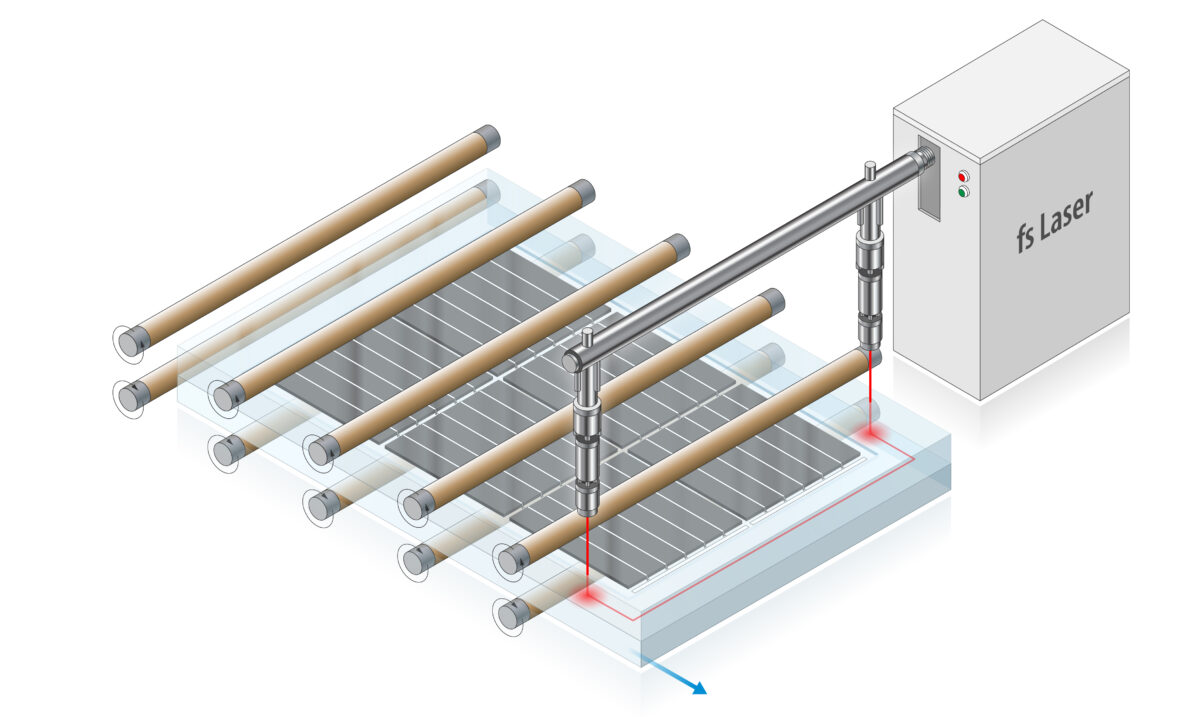Solar panels are highly recyclable, but the use of thin plastic layers to encase solar cells can cause challenges in recycling valuable materials like silicon or silver effectively.
The National Renewable Energy Laboratory (NREL) has developed a proof of concept that helps cut the use of polymers by making direct glass-to-glass welds in solar cells.
The method makes use of femtosecond lasers, a type of infrared laser that focuses energy on a very short time scale with a single laser pulse. The laser creates hermetically sealed glass-on-glass welds. Femtosecond lasers are currently used in medical eye procedures like cataract surgery today.
The laser welds would eliminate the need for plastic laminates that make recycling more difficult. At the end of their useful life span, the modules made with laser welds can be shattered, and the glass and metal wires therein can be recycled and the silicon reused.
“Most recyclers will confirm that the polymers are the main issue in terms of inhibiting the process of recycling,” said David Young, senior scientist and group manager for the High-Efficiency Crystalline Photovoltaics group in the Chemistry and Nanoscience department at NREL.
NREL published the study in IEEE Journal of Photovoltaics. The authors said the laser is cell material agnostic, able to be used with silicon, perovskites, cadmium telluride, etc., because the heat from the highly focused laser is confined to a few millimeters. The researchers said the welds within the glass are essentially as durable as glass itself.
“As long as the glass doesn’t break, the weld is not going to break,” said Young. “However, not having the polymers between the sheets of glass requires welded modules to be much stiffer. Our paper showed that with proper mounting and a modification to the embossed features of the rolled glass, a welded module can be made stiff enough to pass static load testing.”
A different type of edge sealing using nanosecond lasers and a glass frit filler was tried in the past, but the welds proved too brittle for use in outdoor module designs. The femtosecond laser welds offer superior strength with hermetic sealing at a compelling cost, said NREL.
The research was conducted through the Durable Module Materials Consortium, which targets extending the useful life of solar panels to 50 years or beyond.
This content is protected by copyright and may not be reused. If you want to cooperate with us and would like to reuse some of our content, please contact: editors@pv-magazine.com.









The advancements in solar panel recyclability through laser technology are groundbreaking. NREL’s use of femtosecond lasers to create glass-to-glass welds eliminates plastic layers, facilitating easier and more efficient recycling. This innovation not only enhances sustainability but also ensures valuable materials like silicon can be reused effectively, marking a significant step towards greener energy solutions.